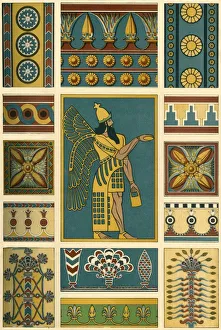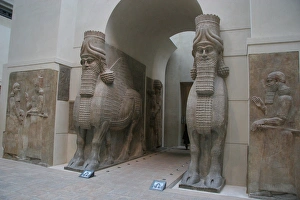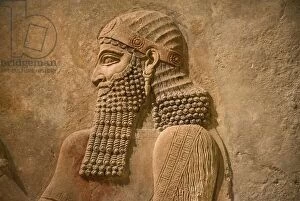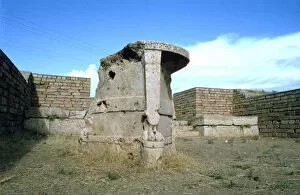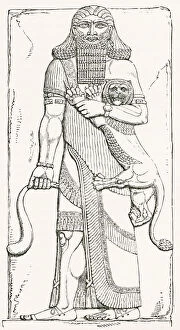Dur Sharrukin Collection
Dur Sharrukin, also known as Khorsabad, was a magnificent city and the capital of the Assyrian Empire during the reign of King Sargon II
All Professionally Made to Order for Quick Shipping
Dur Sharrukin, also known as Khorsabad, was a magnificent city and the capital of the Assyrian Empire during the reign of King Sargon II. The city was adorned with impressive architectural marvels and intricate artworks that showcased the grandeur and power of this ancient civilization. One of the most iconic symbols of the Lamassu or Bull-man gate from Sargon II's palace. These colossal statues guarded the entrance to his majestic residence, exuding strength and authority. The attention to detail in their creation by unknown artisans is awe-inspiring. The walls of King Sargon II's palace were adorned with captivating reliefs depicting scenes from epic tales like Gilgamesh. These reliefs provide us with glimpses into ancient Mesopotamian culture and mythology, showcasing their artistic prowess. In one relief, we see King Sargon II himself depicted alongside his loyal guard, highlighting his importance as a ruler. Another relief portrays him engaging in diplomatic affairs with dignitaries, emphasizing his role as a statesman. Archaeologists have reconstructed parts of Dur-Sharrukin over time, giving us an insight into its original splendor. One such reconstruction showcases the southeast gate of Sargon's palace – a testament to human ingenuity in preserving history. The mural paintings found within Dur Sharrukin's palace are another testament to Assyrian decoration at its finest. Though created by unknown artists in 1928, these paintings still captivate viewers today with their vibrant colors and intricate designs. Not far from Dur Sharrukin lies the Temple of the Sibitti – a sacred place where worshippers paid homage to divine beings. This temple stands as a reminder of religious practices prevalent during that era. Another fascinating aspect is an Assyrian relief depicting the transport of wood – evidence that even back then they had advanced techniques for resource management and construction purposes.

